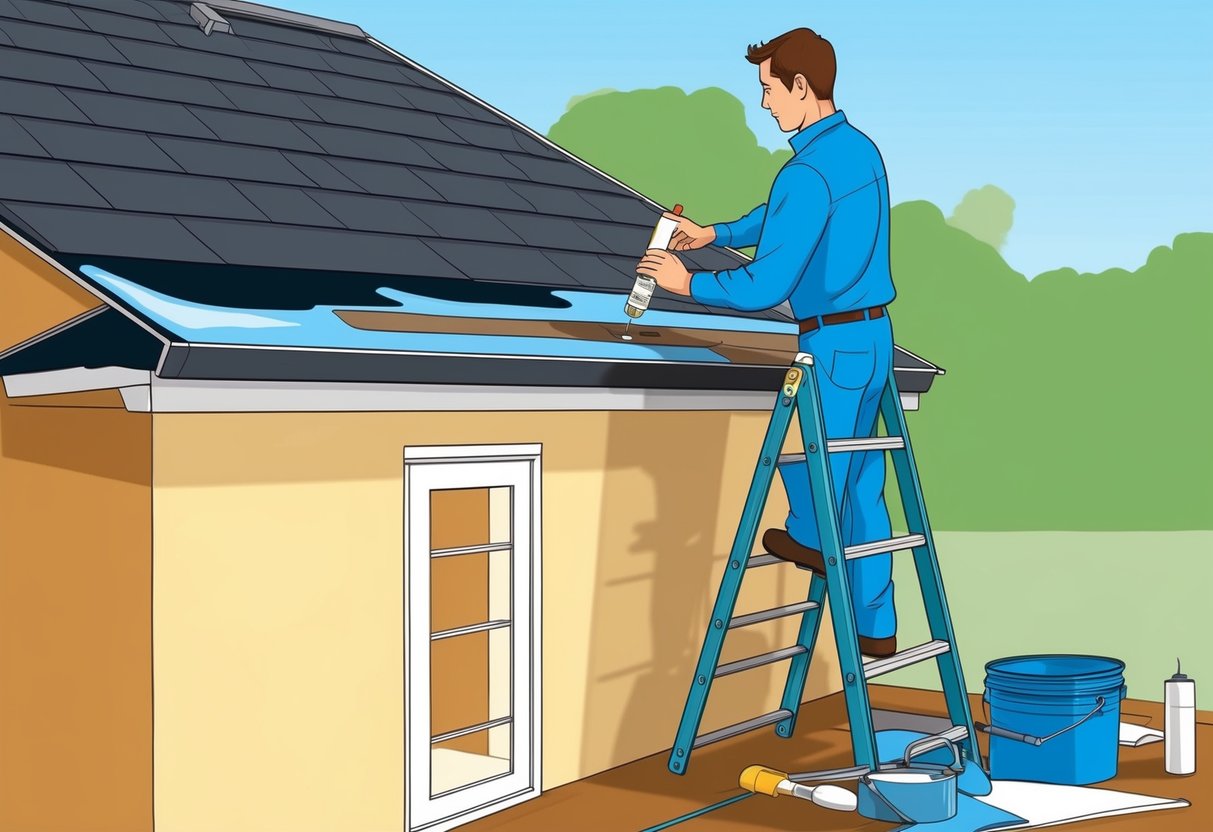
Inspecting the Roof to Identify Leaks
A thorough roof inspection is crucial for pinpointing the exact source of a leak.
Homeowners can avoid ongoing water damage, mold growth, and unnecessary repairs by using systematic techniques and focusing on the areas most prone to issues.
How to Find the Leak Effectively
To locate the source of a leaking roof, first look for visible signs such as water stains on ceilings or walls.
These stains often point to the general area where water is entering, but the actual leak may be uphill on the roof’s surface.
Move to the attic and use a flashlight to trace wet spots, mold, or dark stains along rafters and decking.
From the exterior, carefully examine the roof slope directly above the water stains.
Start uphill and search for points where water can penetrate, such as damaged shingles, gaps, or deteriorated sealant.
Penetrations like vents and chimneys are frequent leak culprits.
Homeowners may find it helpful to use a garden hose to simulate rain and observe where water enters from above, as outlined in guides like the Family Handyman’s roof leak tips.
Keep a detailed checklist for your inspection:
- Water stains on ceilings/walls
- Wet insulation in the attic
- Visible daylight through the roof
- Damaged or missing shingles
Inspecting Flashings, Skylights, and Roofing Materials
Metal flashings around chimneys, vent pipes, and skylights are common areas where roof leaks start.
Over time, sealants can dry out and metal can corrode, allowing water ingress.
Carefully inspect these areas for cracks, gaps, or signs of rust.
Examine skylights for missing or cracked seals, foggy glass, or wet drywall around the frame.
Check that roofing materials like tiles or shingles are intact, properly seated, and free of breaks.
Loose or curled shingles often allow water to slip underneath and cause damage to roof sheathing.
Make note of issues with overlapping materials:
- Lifted or missing shingles
- Loose flashing or torn sealant
- Debris buildup around penetrations
As detailed in the Trusted Roofing Services step-by-step guide, even minor flaws can lead to major problems if left unchecked.
Identifying Mold and Structural Damage
Prolonged leaks not only cause cosmetic issues but also threaten a roof’s structural integrity.
Mold thrives in moist, dark areas, particularly within insulation and on wood rafters.
Watch for dark spots, fuzzy patches, or a musty odor in attic spaces as early warning signs.
Probe wooden structures for softness or crumbling, which often indicates rot or advanced water damage.
Mold and wood decay weaken structural components, making timely identification essential.
Mold growth can also compromise indoor air quality and pose health risks.
Inspect drywall, beams, and insulation:
- Look for visible mold growth
- Check for soft or warped lumber
- Note musty smells near affected areas
Understanding these conditions early prevents continued roof leak damage and costly repairs.
Take action if any evidence of mold or rot is found, as this usually means the leak has been present for some time.
Preparing for Repairs: Gathering Materials and Supplies
Selecting the proper materials and supplies speeds up the repair process and helps prevent further roof damage.
Knowing what to gather in advance can also reduce stress and make the work area safer for beginners.
Recommended Roofing Materials for Beginners
Beginners should focus on user-friendly, easy-to-install roofing materials to handle minor leaks.
Asphalt shingles are among the most common choices because they are lightweight, affordable, and simple to cut or replace.
Many home improvement stores offer starter kits that contain replacement shingles, roofing nails, and adhesive—making it easier to get everything in one trip.
A few key supplies include:
- Roofing tar for sealing cracks or small holes.
- Roofing nails and a hammer for securing new shingles.
- Roofing adhesive or caulking gun to provide a waterproof seal around repaired areas.
- Utility knife and pry bar for removing damaged shingles.
- A good quality ladder for access, along with safety gear like gloves and shoes with slip-resistant soles.
Compared to tile or metal materials, asphalt and composite supplies are typically more forgiving for first-timers.
For a full list of recommended items, review a comprehensive step-by-step repair guide.
Temporary Leak Solutions
When a full repair can’t be completed right away, temporary fixes are essential to prevent interior water damage.
A plastic tarp is often the fastest solution—carefully pull the tarp over the affected area and weigh down the edges with boards or heavy objects.
Secure the tarp with roofing nails, making sure it extends at least 2-3 feet past the damaged area to divert water safely.
Roofing tar can be applied as a short-term roof patch, especially on small cracks or leaks around vents and flashing.
Apply it directly from the can using a putty knife for best results, pressing the tar into gaps or holes.
Make sure to use thick, even layers for a watertight seal.
Keep a roll of roofing tape or sealant strips in your tool kit for quick patch jobs in dry weather.
These products adhere well to shingles and metal surfaces and offer a temporary fix until you can complete a permanent repair.
For more advice about short-term leak management, see this roof leakage repair guide.